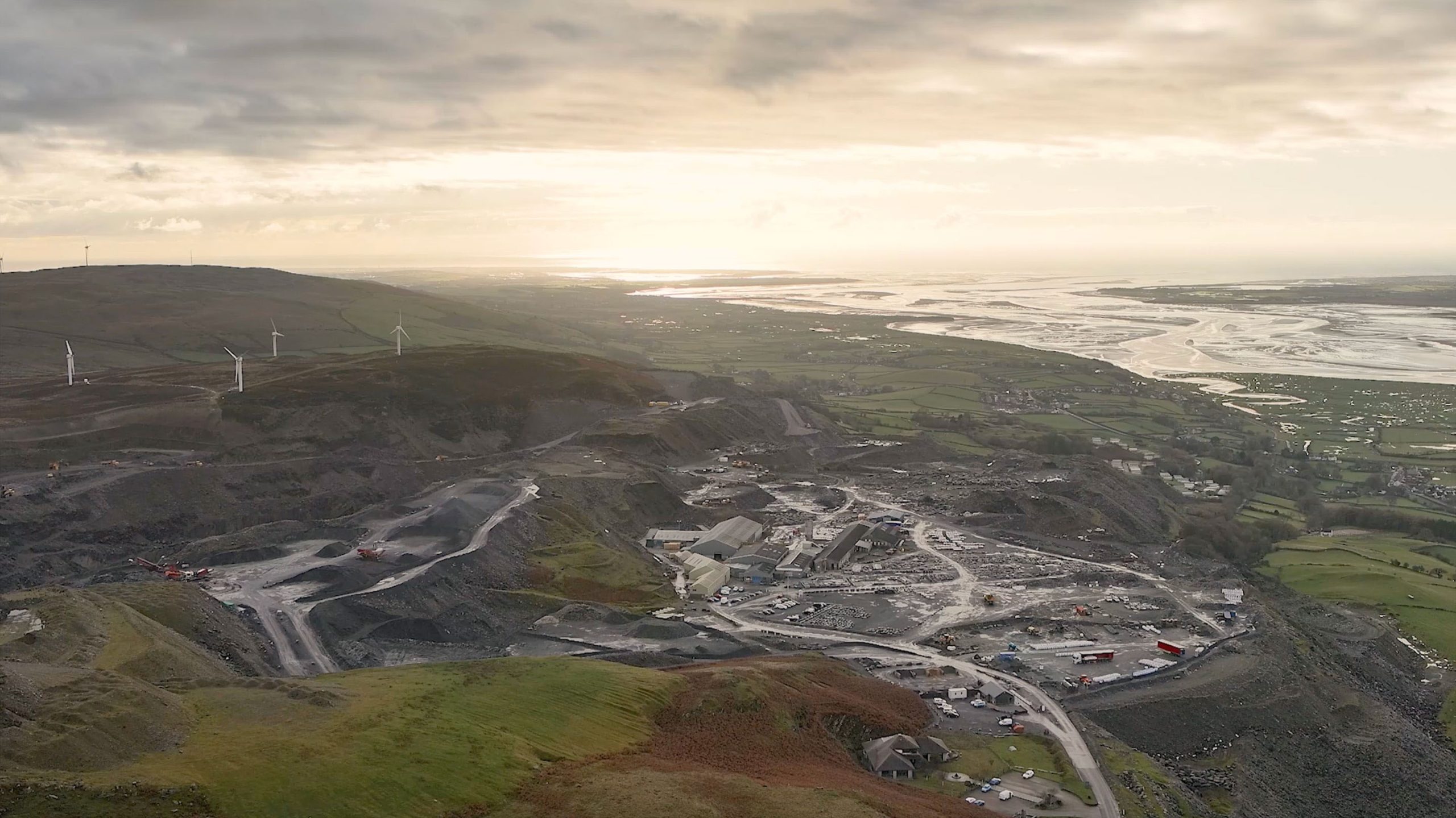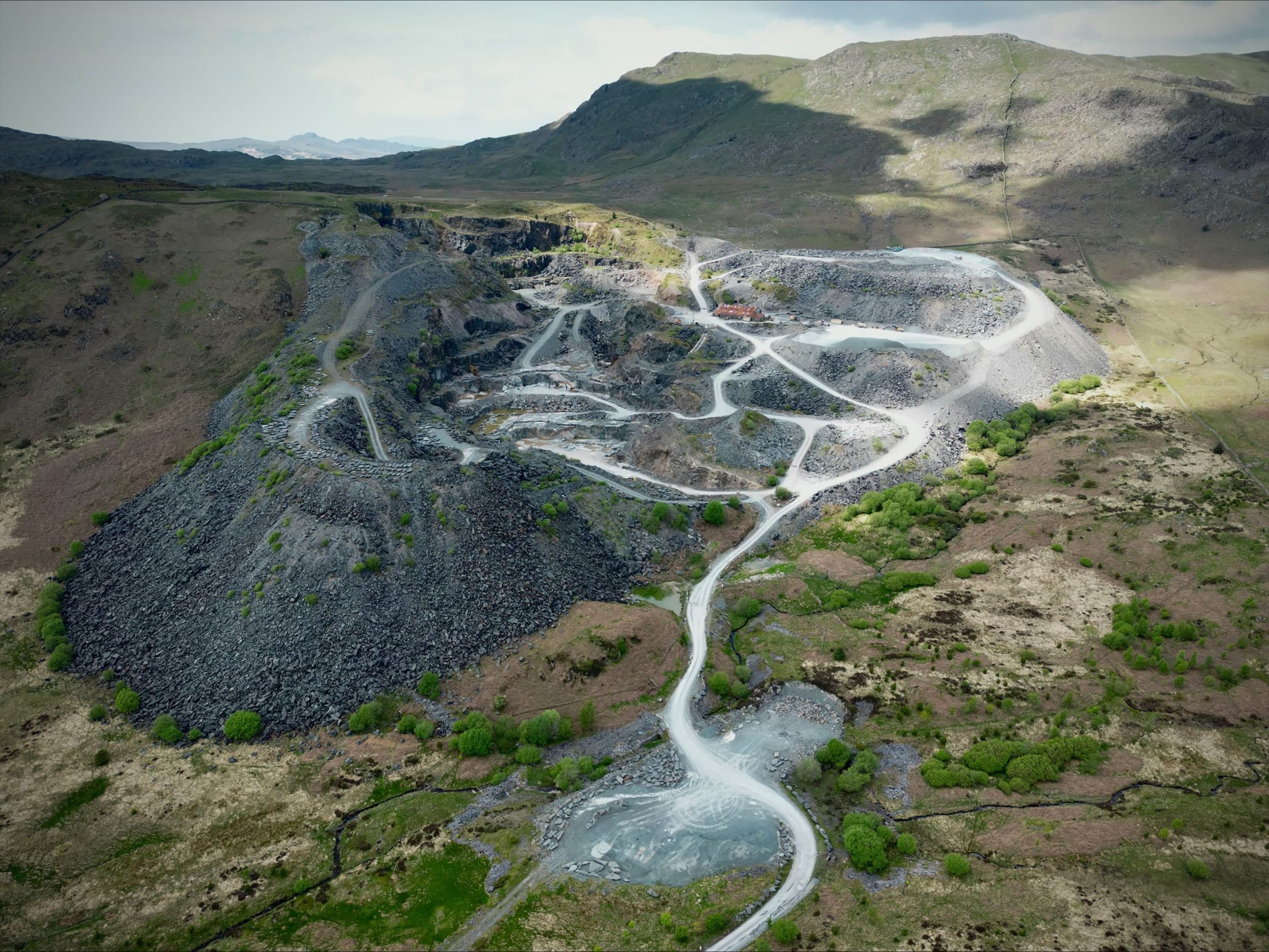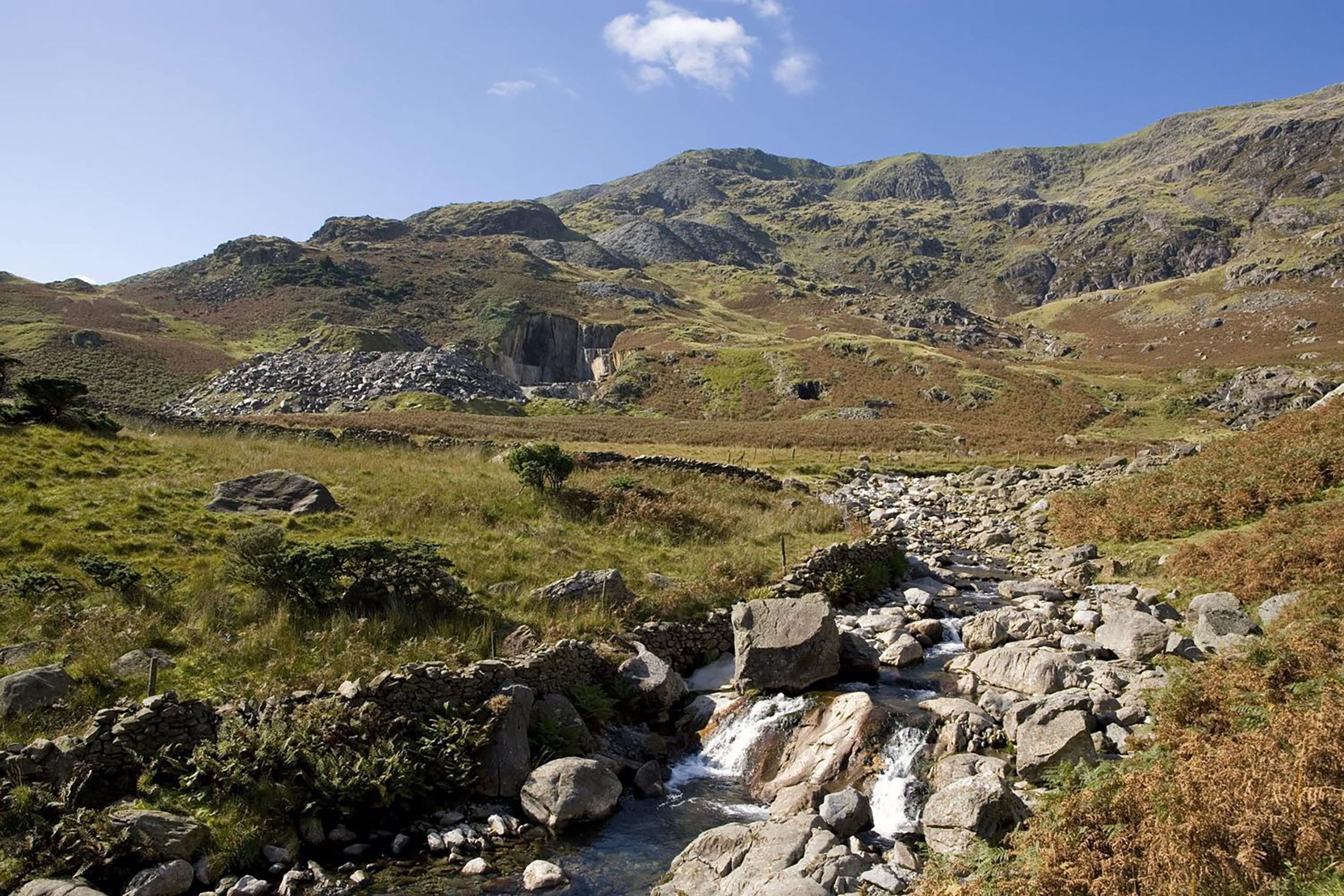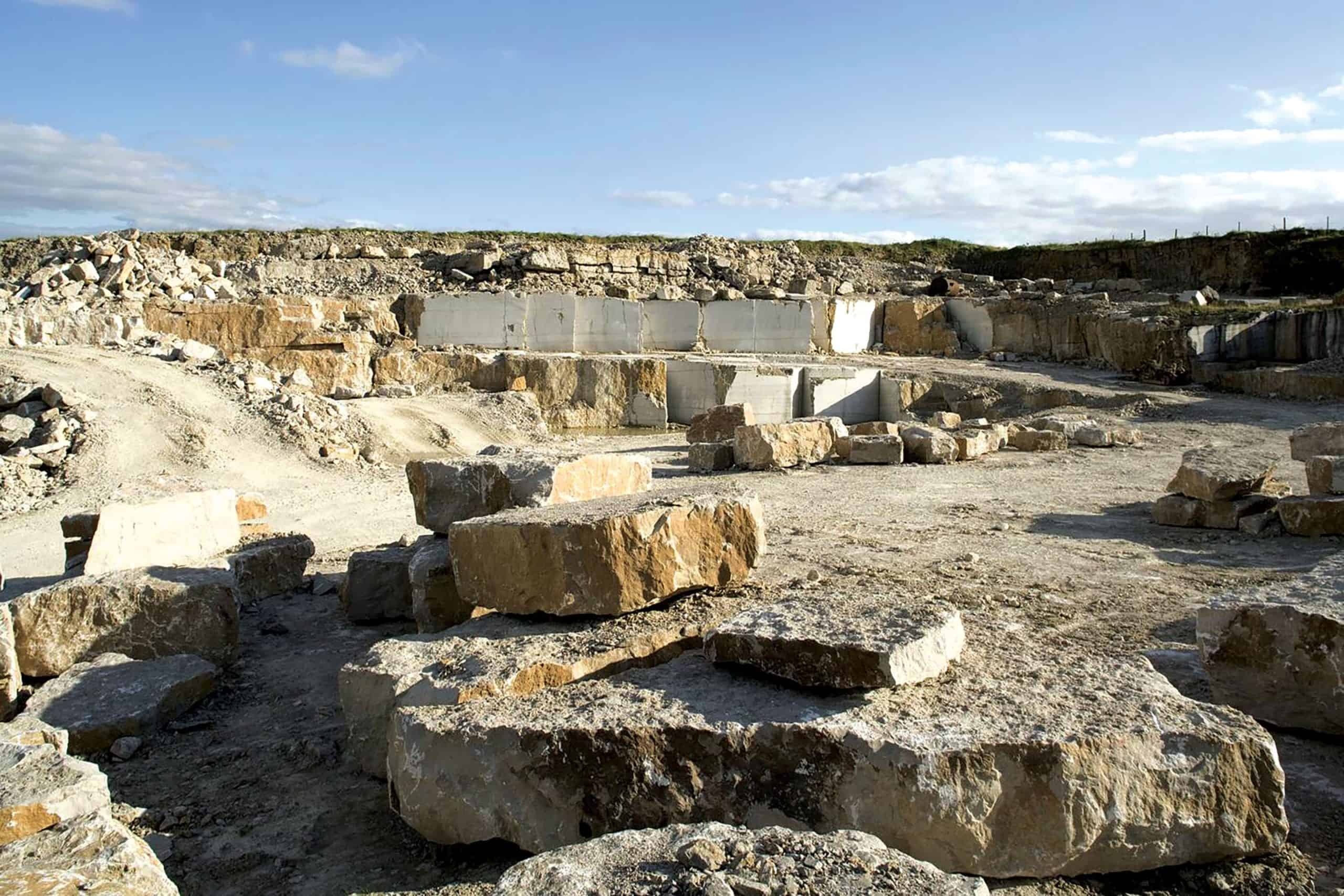Our Quarries
Bringing 450 million years of British geology and over 180 years of British craftsmanship right into the heart of your project, we work six quarries all located in Cumbria and the English Lake District and we produce seven different stones.
Volcanic ash and natural sediments deposited in layers into Lakeland waters over many millions of years have been metamorphosed by extreme heat and pressure from geological processes and tectonic movement to create a unique and versatile range of slate and stones of the highest quality with incredible flexural strength and low porosity making them robust and enduring.
Burlington Stone isn’t simply quarried; it’s lovingly crafted using a mix of time-honoured techniques and cutting-edge technology. We treat the stone with respect, and it shows within the quality of our work. Carefully removed from its environment by our exceptional quarry engineers, using techniques passed down over many generations combined with modern production equipment such as diamond wire saws, it is then carried a short distance to our workshops in Cumbria. Our team of British craftsmen and specialists then set to work using traditional skills, alongside state-of-the art CNC cutting machinery, to ensure the natural beauty and unique nature of the stone is brought to life.
Burlington is committed to undertaking best quarrying practices to ensure the highest environmental standards are achieved. We hold ISO 14001 environmental accreditation and independent technical assessment highlights the longevity and durability of the stone and substantiates its claim to being a long-term sustainable solution for projects.
Burlington slate and stone are British materials, shaped by the British landscape and by British specialists – the natural choice for the discerning, looking for a distinctive British stone of the highest quality and with history, to make the difference on their project.

Kirkby Quarry
Situated on Kirkby Moor, just above the village of Kirkby-in-Furness, Kirkby quarry is the old man of the Burlington quarry family having been worked for over 450 years. Part of the Great Chain quarries on Kirkby Moor, Kirkby quarry is geologically part of the Wray-Castle Formation of the Windermere Supergroup. Kirkby slate is sedimentary in nature and was formed in the Silurian period, some 300-350 million years ago and is an even blue grey colour throughout. Kirkby has been used for generations to provide roofing slate, stone walling, flooring, cills, lintols, quoins, paving, setts and copings.

Elterwater Quarry
Lying at the foot of the beautiful Langdale Valley with open views to the Langdale Pikes, Elterwater quarry has been worked since the middle of the 19th Century. Elterwater slate is a metamorphic volcanic ash from the Borrowdale Volcanic Group formed during the Ordovician period and is between 450-500 million years old. A pale green stone, often highlighted by contrasting markings and ash veining which emphasise its natural origins, Elterwater has been used to add character and beauty to many domestic and commercial projects around the world for roofing, paving, flooring, cladding, walls, cills, and worktops.

Broughton Moor Quarry
Situated on the flank of White Pike to the south west of The Old Man of Coniston, mid-way between Broughton-in-Furness and Coniston, Broughton Moor quarry is inherently a part of the ancient land of the Lake District and enjoys an isolated location, with a long history of sharing her treasure. Broughton Moor slate is a metamorphic volcanic ash from the Borrowdale Volcanic Group formed during the Ordovician period and is between 450-500 million years old. Broughton Moor is a mid green stone, often highlighted by contrasting white veins and beautiful tone changes that reflect its natural origins. It can be extracted in a variety of green tones to add a dark and light green contrast to surfaces, yet purvey the beauty of its natural markings, and is used as a beautiful architectural stone and roofing slate.

Brossen Stone Quarry
Perched loftily on the eastern flank of the Old Man of Coniston – one of the Lake District’s best known mountains – and nestled below the stunning mountain lake of Low Water, Brossen Stone quarry watches over Coniston village and beautiful Coniston Water. One of the most prominent quarries within the Lake District, producing an iconic stone, the quarry has been worked since the middle of the 19th Century. Green in colour and often highlighted by contrasting veins which emphasise its natural origins, Brossen Stone is a metamorphic volcanic ash from the Borrowdale Volcanic Group, laid down 450-500 million years ago during the Ordovician period, and is prized by architects for use as an exterior and interior architectural stone for cladding, flooring and finishes.

Brandy Crag Quarry
Situated just above Coniston Village, within the Coniston Coppermines Valley, Brandy Crag quarry has been worked since the middle of the 19th Century. Brandy Crag slate is a metamorphic volcanic ash from the Borrowdale Volcanic Group formation and was laid down during the Ordovician period and is between 450-500 million years old. The quarry produces two different stones: Brandy Crag, a grey stone characterised by mottled volcanic ash deposits, and Brandy Crag Silver, a silver grey natural stone that exhibits soft, light tones and shades with appeal elevated by the existence of contrasting veins and markings inherent within the body of the stone that not only serve to highlight its authenticity but also its outstanding tactility. Occasionally used as a roofing slate, Brandy Crag is prized by architects for delivering unique, stunning and practical internal and external architectural design.

Baycliff Quarry
Situated on the outskirts of the historic market town of Ulverston, Baycliff is a bioclastic limestone that was formed in the Carboniferous period over 300 million years ago. Baycliff is one of the hardest and most durable limestones available for use in construction and the quarry produces two stones from differing beds: Baycliff Caulfield, a buff coloured limestone with light coffee mottling, and Baycliff Lord, an oatmeal coloured limestone with occasional contrasting veining.